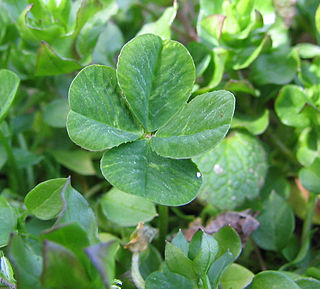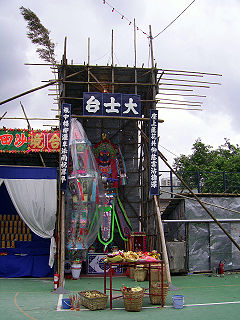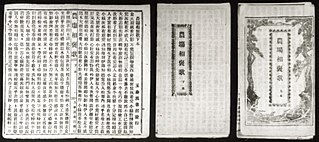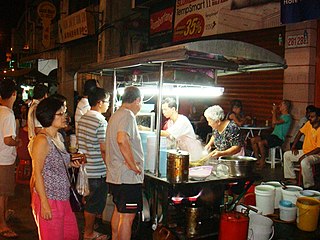
Triskaidekaphobia is fear or avoidance of the number 13. It is also a reason for the fear of Friday the 13th, called paraskevidekatriaphobia or friggatriskaidekaphobia.
Manglish is an informal form of Malaysian English with features of an English-based creole principally used in Malaysia. It is heavily influenced by the dominant languages of the country, Malay, Chinese languages, and Tamil. It is not an official language of Malaysia.

Luck is the phenomenon and belief that defines the experience of improbable events, especially improbably positive or negative ones. The naturalistic interpretation is that positive and negative events may happen at any time, both due to random and non-random natural and artificial processes, and that even improbable events can happen by random chance. In this view, the epithet "lucky" or "unlucky" is a descriptive label that refers to an event's positivity, negativity, or improbability.

The Ghost Festival, also known as the Zhongyuan Festival in Taoism and Yulanpen Festival in Buddhism, is a traditional Taoist and Buddhist festival held in certain East Asian countries. According to the Chinese calendar, the Ghost Festival is on the 15th night of the seventh month.

Chinatown is a subzone and ethnic enclave located within the Outram district in the Central Area of Singapore. Featuring distinctly Chinese cultural elements, Chinatown has had a historically concentrated ethnic Chinese population.
Some numbers are believed by some to be auspicious or lucky or inauspicious or unlucky based on the Chinese word that the number sounds similar to. The numbers 3, 6, and 8 are generally considered to be lucky, while 4 is considered unlucky. These traditions are not unique to Chinese culture, with other countries with a history of Han characters also having similar beliefs stemming from these concepts.

Tetraphobia is the practice of avoiding instances of the digit 4. It is a superstition most common in East Asian nations.
Japanese superstitions are rooted in the culture and history of Japan and the Japanese people. Some Japanese superstitions are meant to teach lessons or serve as practical advice.
Malaysian Mandarin is a variety of Mandarin Chinese spoken in Malaysia by ethnic Chinese in Malaysia. Today, Malaysian Mandarin is the lingua franca of the Malaysian Chinese community.
Singlish is the English-based creole or patois spoken colloquially in Singapore. English is one of Singapore's official languages, along with Malay, Mandarin, and Tamil. Although English is the lexifier language, Singlish has its unique slang and syntax, which are more pronounced in informal speech. It is usually a mixture of English, Mandarin, Tamil, Malay, and other local dialects like Hokkien, Cantonese or Teochew. There are a few loan words from these languages i.e. pek chek is often taken as being annoyed or frustrated and originate from the Hokkien dialect. It is used in casual contexts between Singaporeans, but is avoided in formal events when certain Singlish phrases may be considered unedifying. Singapore English can be broken into two subcategories. Standard Singapore English (SSE) and Colloquial Singapore English (CSE) or Singlish as many locals call it. The relationship between SSE and Singlish is viewed as a diglossia, in which SSE is restricted to be used in situations of formality where Singlish/CSE is used in most other circumstances.
The following faux pas are derived from homonyms in Mandarin and Cantonese. While originating in Greater China, they may also apply to Chinese-speaking people around the world. However, most homonymic pairs listed work only in some varieties of Chinese, and may appear bewildering even to speakers of other varieties of Chinese.
Singaporean Hokkien is a local variety of the Hokkien language spoken natively in Singapore. Within Chinese linguistic academic circles, this dialect is known as Singaporean Ban-lam Gu. It bears similarities with the Amoy spoken in Amoy, now better known as Xiamen, as well as Taiwanese Hokkien which is spoken in Taiwan.

The Hokkien variety of Chinese is a Southern Min language native to and originating from the Minnan region, where it is widely spoken in the south-eastern part of Fujian in southeastern mainland China. It is one of the national languages in Taiwan, and it is also widely spoken within the Chinese diaspora in Singapore, Indonesia, Malaysia, the Philippines and other parts of Southeast Asia; and by other overseas Chinese beyond Asia and all over the world. The Hokkien 'dialects' are not all mutually intelligible, but they are held together by ethnolinguistic identity. Taiwanese Hokkien is, however, mutually intelligible with the 2 to 3 million speakers in Xiamen and Singapore.

Chinese New Year is the festival that celebrates the beginning of a new year on the traditional lunisolar and solar Chinese calendar. In Chinese and other East Asian cultures, the festival is commonly referred to as the Spring Festival as the spring season in the lunisolar calendar traditionally starts with lichun, the first of the twenty-four solar terms which the festival celebrates around the time of the Chinese New Year. Marking the end of winter and the beginning of the spring season, observances traditionally take place from New Year’s Eve, the evening preceding the first day of the year to the Lantern Festival, held on the 15th day of the year. The first day of Chinese New Year begins on the new moon that appears between 21 January and 20 February.

Hokkien, a Min Nan variety of Chinese spoken in Southeastern China, Taiwan and Southeast Asia, does not have a unitary standardized writing system, in comparison with the well-developed written forms of Cantonese and Vernacular Chinese (Mandarin). In Taiwan, a standard for Written Hokkien has been developed by the Republic of China Ministry of Education including its Dictionary of Frequently-Used Taiwan Minnan, but there are a wide variety of different methods of writing in Vernacular Hokkien. Nevertheless, vernacular works written in the Hokkien are still commonly seen in literature, film, performing arts and music.

Penangite Chinese are ethnic Chinese Malaysians of full or partial Chinese ancestry who either hail from or live within the State of Penang. As of 2017, nearly 42% of Penang's population belonged to the Chinese ethnic group, making ethnic Chinese the largest ethnic community within the state.
Malaysian Cantonese is a local variety of Cantonese spoken in Malaysia. It is the lingua franca among Chinese throughout much of the central portion of Peninsular Malaysia, being spoken in the capital Kuala Lumpur, Perak, Pahang, Selangor and Negeri Sembilan, it is also widely understood to varying degrees by many Chinese throughout the country, regardless of their ancestral language.
Taiwanese superstitions are widely believed among the Taiwanese population as these superstitions stem from legends, folklore, traditions, customs that have been practiced throughout generations, and many more.










